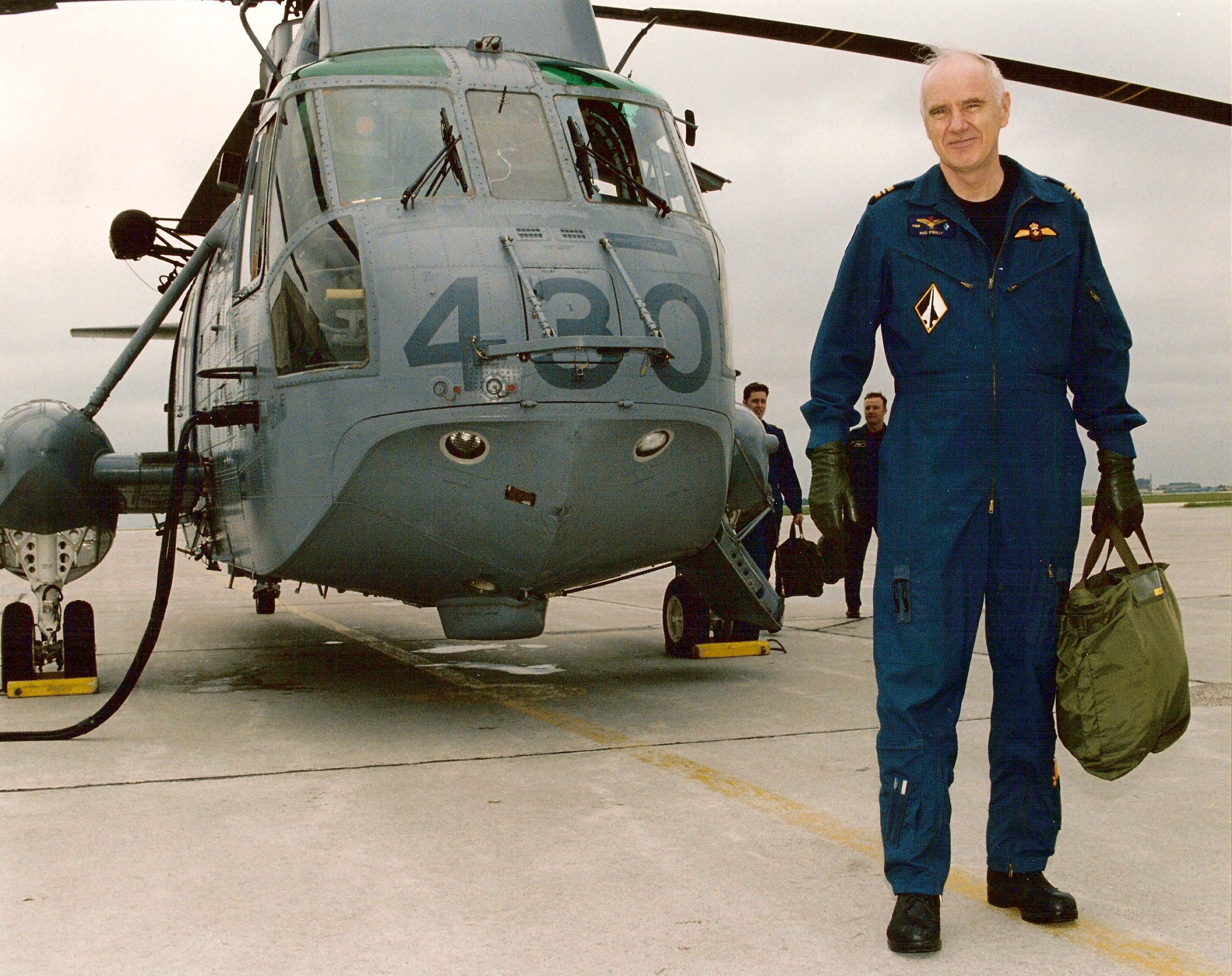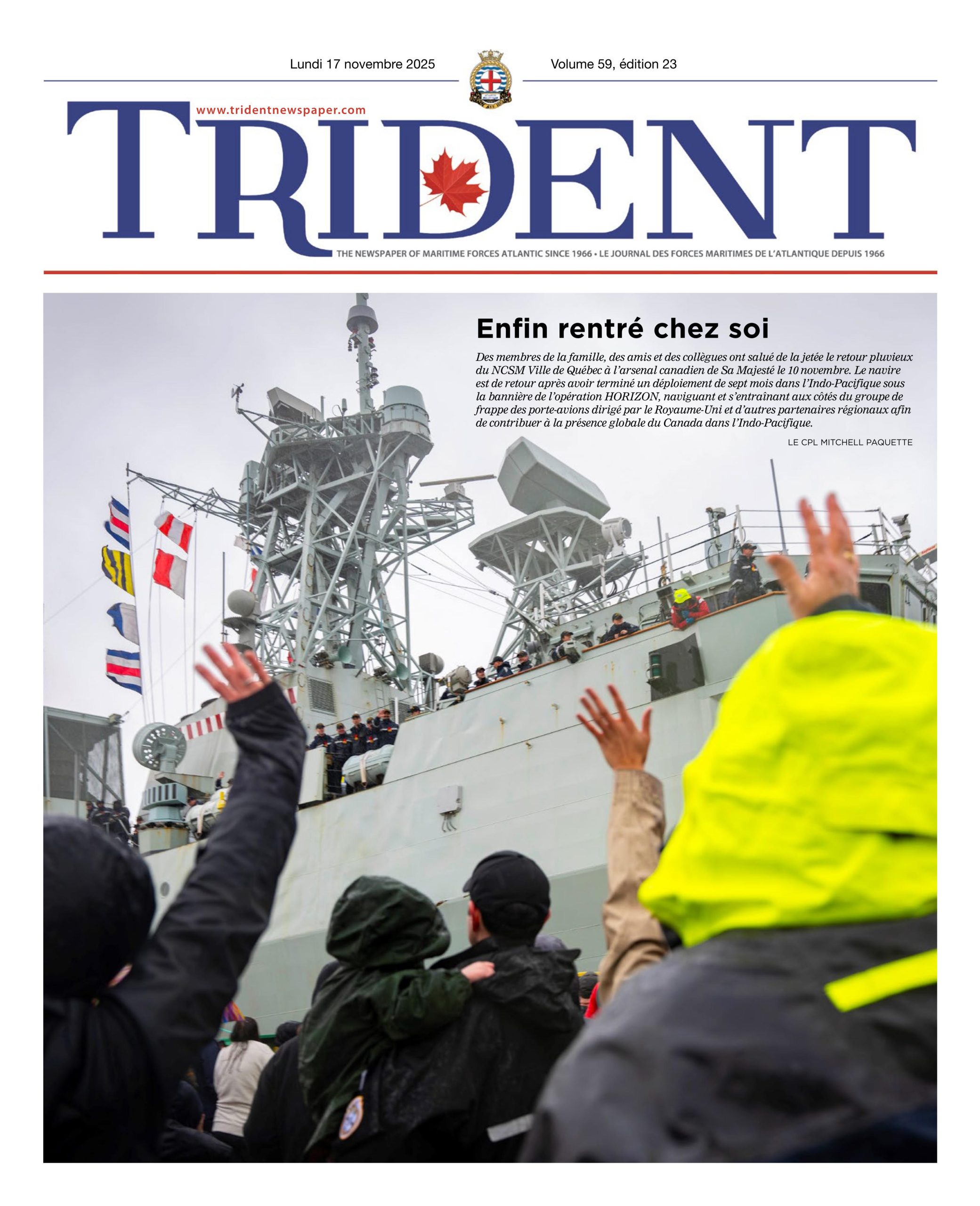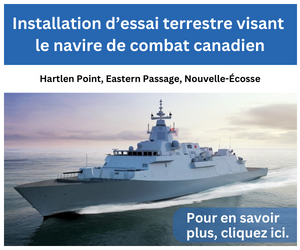
SOUMIS
Bidding farewell to the Sea King
Par Peter Mallett,
The Lookout Staff
When the Royal Canadian Air Force’s remaining Sea King helicopters are phased out, retired RCAF pilot Maj (Ret’d) Paul O’Reilly admits it will be akin to losing a close friend.
That’s because he spent much of his 34-year career in the CAF flying the Cold War era, Sikorsky-built twin engine amphibious helicopter on and off the decks of Canadian warships.
O’Reilly, 71, says saying goodbye to them will be a teary affair. “You can’t help but get a little bit misty eyed. For any pilot who flies an aircraft, you grow attached to it as the years roll by, and you would forever recognize it instantly.”
Today O’Reilly spends two days of his week volunteering at the CFB Esquimalt Naval and Military Museum. He is a military history buff and founding member of the Vimy Flight group, which, in 2017, took First World War replica planes to the 100. Anniversary ceremony at Vimy.
His love of history, and also living some of it, gives him an interesting perspective on the Sea King.
In 1987, he was a pilot onboard HMCS Huron as it sailed through the Panama Canal from 12 Wing Shearwater heading to Esquimalt Harbour with two Sea Kings onboard. They were the first two helicopters to arrive for naval operations on the West Coast.
“I’m surprised they [Sea Kings] are still here,” he says. “When I came out to the West Coast with the first Sea Kings, the whole idea was these aircraft would last three or four years and a new, more modern helicopter would show up and we would move to that.”
A hasty replacement for them in Canada did not happen, and so the decades went by.
“One of the reasons why they lasted so long was because with constant technological upgrades over the years, they could still do the job. Why would you change and get a new aircraft when the one you are using does everything the navy wanted it to do?”
The Sea King’s compact design, combined with a fold-up rotor and tail, enabled it to fit neatly in the hangar of a warship after landing on the deck, and its amphibious hull enabled it to conduct water landings in an emergency.
“They got the job done because they handled well. The flight deck on most ships was about 48 by 78 feet wide, so the biggest challenge with the Sea King, as with other helicopters of their size, was landing it as the ship bobbed up and down in the water, especially in stormy seas. Your timing had to be perfect so the ship’s company could hook the helicopter in with its Beartrap system.”
The haul-down mechanism was developed in Canada. It uses a line and probe lowered from the helicopter to the deck and then attached to the ship.
“The Royal Canadian Navy was at the forefront of learning how to put a big helicopter on a small ship, and these helicopters were much more capable than smaller ones because they could travel longer, carry more supplies, and had a more sophisticated suite of detection equipment.”
But their usefulness has gradually been eclipsed by new helicopters with modern technology. Today, very few countries still use Sea Kings. That includes the British military which said farewell to their remaining Sea Kings in 2016, and the U.S. military who replaced them 12 years ago.
“The main reason the helicopter is being phased out is because nobody makes the engines or replacement parts anymore, making it next to impossible to make repairs,” says O’Reilly.
This year marks the replacement of the Sea Kings – the CH 148 Cyclones, which are being phased into service.
As the future generation of aviators prepare to take to the cockpits of the new Cyclone, O’Reilly’s advice is “expect the unexpected”, as with any new technology.
“The main trouble of switching to another aircraft is that a pilot truly doesn’t know what it is capable or incapable of,” he says. “But I have a feeling this one may also stand the test of time, so I advise today’s pilots to look at their grandchildren because they may be flying it too.”






